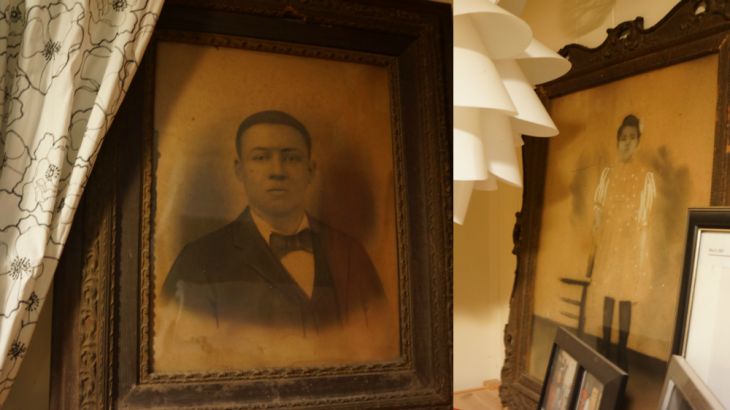When a museum becomes human
Many pieces on display in the new Smithsonian museum of African American history were donated by “ordinary people”.

In my home office, I keep two large black and white photos taken in 1905. This was 40 years after the end of slavery in the United States.
One is of my maternal grandmother, Arie Lee Lewis Thomas. She is four years old, standing next to a table, wearing a frilly white dress, stockings, and lace-up black boots.
Keep reading
list of 4 itemsUK returns looted Ghana artefacts on loan after 150 years
Fire engulfs iconic stock exchange building in Denmark’s Copenhagen
Inside the pressures facing Quebec’s billion-dollar maple syrup industry
Her thick black hair is styled in a fashionable schoolgirl’s bouffant. An only child, she will fulfil all the ambitions her parents had saved for her brother Lonnie, who died before he turned one.
College, work as a nurse and a teacher, marriage and four children, taxpayer, pillar of the church.
I only knew her as an old woman and I was barely out of diapers then.
The other photo is of her father, my great-grandfather, Matthew Lewis. He wears a suit, vest and tie, and he stares firmly at the camera. He was said to be a tough old soul – a landowner, business owner and railroad employee who didn’t laugh easily.
Matthew Lewis died in 1955, years before my parents met, got married and had me.
READ MORE: Museum sheds light on African American history
My family says it’s my job to take care of the photos because they are proof our family thrived.
You’d be hard-pressed to find a black family in the US that doesn’t cherish similar objects. The idea of letting someone else have these things is unthinkable – because who’s going to care more about your family’s legacy than you?
It turns out many families have decided to do just that. Their donations are now part of the new Smithsonian National Museum of African American History and Culture.
I recently toured the museum, and I was moved much more so than I expected.
Why? Because other families opened their attics and closets and said, “Here, share our family’s story with the world.”
![President Obama was present at the opening of the Smithsonian’s National Museum of African American History and Culture [Joshua Roberts/Reuters]](/wp-content/uploads/2016/09/04f663783257445ea998fd18247f4d5a_18.jpeg)
Here is someone’s report card from school. There, a nurse’s uniform, freshly washed, starched and pressed. A programme from a college football game. A US Army-issued service revolver. A beaded silk wedding dress. An obituary for a little boy felled by fever.
Evidence of ordinary American lives. Extraordinary in that they undermine the still-strong stereotypes of black people – lazy, stupid, inclined to engage in immoral or illegal behaviour.
Of course, this being the US, people are expressing their opinion about the new museum. The criticism includes “an example of political correctness run amok”, “a waste of money”, and “a symbol of racial division perched on the nation’s front yard”.
I note the critics’ words. However, the museum is now here. Visitors will see what they want to see. Others will decide not to visit. That is their right.
What I don’t want lost in the conversation about the museum is what it has already achieved. It has compelled millions to stop, remember and reflect on the history of this nation, and what their families contributed.
That there is a physical place for all Americans – not just African Americans – to do so is a bonus.
I’ve been meaning to have my ancestors’ photos restored. I don’t know that we’ll donate them to the museum, but I do see a new power in them. My grandmother and my great-grandfather have inspired me, and I hope their photos inspire future generations of my family.